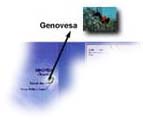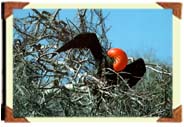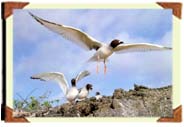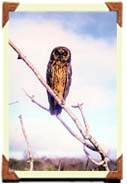 |
 |
 |
 |
  
|
A distant sail away from the central
islands, at the northeastern edge of the archipelago, lies Genovesa.
One of the most pristine of the Galapagos group, it is the remote
refuge of many thousands of oceanic birds. Genovesa, as a result of its
isolation, remains an undisturbed nesting ground for these birds, who fish
in its rich wa-ters, and lacks introduced as well as native land animals
and rep- tiles-the only reptile, in fact, is a small subspecies of marine
iguana.
The island itself is the summit of a huge inactive undersea vol- cane, which protrudes above the water a scant 250 feet. The main vent of the volcano, a large circular caldera, or collapse crater,with a saltwater Glee some 200 feet deep on its floor, depresses the center of the island, while the southern side of Genovesa, the site of a partially eroded crater, is scooped out to form Darwin Bay. At sea level, cliff-bound Darwin Bay is the most accessible of the calderas. Boats anchoring in the bay will usually become perches for red-footed boobies in search of food, and a frigatebird or two may easily talkie up residence in the upper riggings. Visitors stepping onto land find themselves instantly in the midst of vast seabird colonies. Genovesa is home to what is proba- bly the largest collection of red-footed boobies (up to140,000 pairs), who nest in the gray polo santo trees dotting the cliffs. Over- head, cries-crossing the slay, are gleaming white swallow-tailed gulls, silently gliding frigatebirds, and the hosts of red-billed tropic birds and black and white Audubon shearwaters that occupy the deep openings in the mountainous lava formations. The southeastern cliffs are alive with one of island's largest colonies of wedge romped petrols (up to 200,000 pairs), tiny, nocturnal birds that share the small point of land with their daylight-loving relatives, the delicate band-rumped petrols. Toward the interior of the island, which is covered with stocky, low-growing prickly pear and is generally arid, four species of Darwin's finches can be found, and the Galapagos dove can be seen bobbing along under bushes and over the lava, looking for seeds.
|
|
|